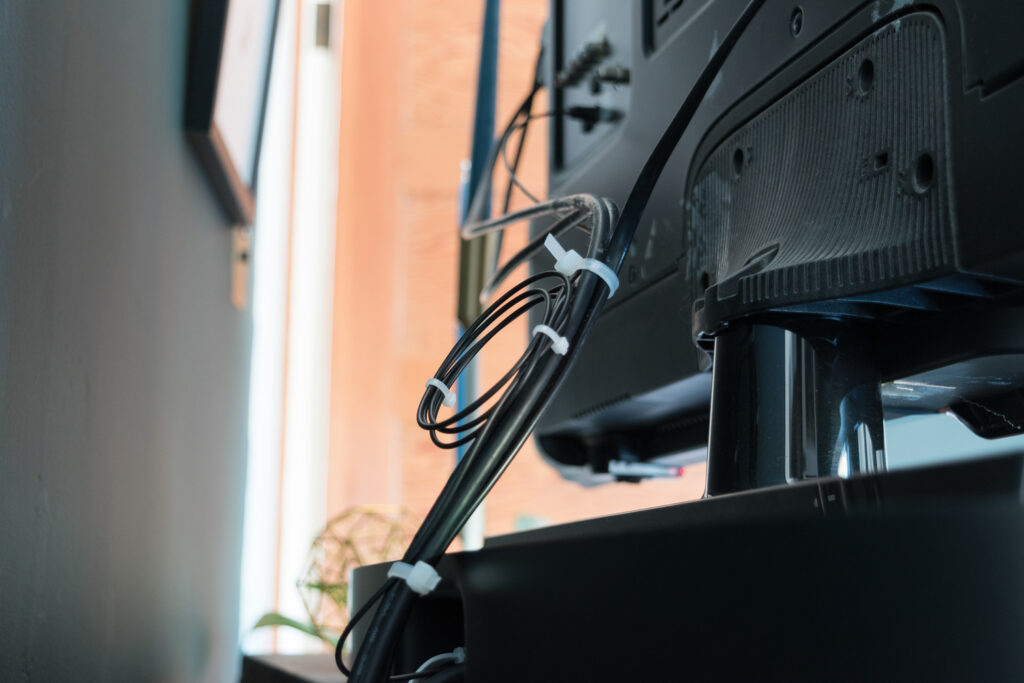
What are Data Center Tier Classifications?
It’s been approximately a quarter of a century since the day when Uptime I...

Data centers are premises where hundreds of high-precision computing equipment items are stored. To interconnect and form systems or even be connected to power sockets, each component needs some cords. Imagine if dozens or hundreds of hardware items are placed in a server room. Then, the number of cables reaches thousands. How should system administrators and maintenance staff perform their duties and monitor system performance in such conditions? They would spend hours searching for the necessary wire.
Thus, the modern market offers a wide range of tech tools, kits, and accessories for hiding cables elegantly and conveniently. This is a useful solution for large data centers for the following reasons:
1. Proper rack mounted cable management speeds up and simplifies maintenances works and allows finding the required wire quickly;
2. Hided cables will be securely protected from rats and rodents;
3. Employees won’t step on them;
4. Wisely cable routing does not impede movements.
Open cables are inconvenient since they can tangle or even be dangerous for employees. That is why it is recommended to isolate them and arrange them in bundles fastening them to vertical surfaces. This will help create a well-structured routed system and avoid many problems.
If you want to do it yourself or just understand what stages the process is comprised of, let’s see what we’ll need to hide wires on wall:
This class embraces a wide assortment of accessories. The following solutions are applicable: cable boxes, cord clips, staples, clamps, and ties. The required option is chosen, taking into account the place of mounting, the number of cords, and the material of the wall.
Such kits usually include a cable puller, a bar that bends well but straightens easily. The elastic core is surrounded by special fibers that strengthen the structure and give the puller the desired rigidity. These properties allow such a design to overcome the difficult sections encountered when laying the cable. The processing accuracy of these pullers is 0.04 mm and higher.
This is a type of saw that can be used to create round holes in wood, concrete, and other materials. Teeth or diamond coating are placed on its cutting edges. The circular movement is transmitted to the saw by means of an electric drive with the help of a drill.
This is a popular construction and installation tool that performs drilling work. It is used to make the hole of the required shape and size to hide cables on wall.
Outlets are made so that the cover with a hole for the wires rotates around its axis. This allows users to put it in the optimal position so that the cable is not pinched and positioned correctly. In addition, there is an option to adjust the hole size to suit the amount of wire to pass through. The design is very simple and consists of two elements: the base and the upper movable part with latches that allow cover wires on wall.
These are specialized cords designed for in-wall mounting. They are durable and are produced from resistant materials to ensure a long service life and perfect wiring on the wall.
These are enclosed products designed for putting cords inside. Their main function includes keeping wires secure and protected since constructions are rather tough. Most often, cable channels consist of a U-shaped tray – a base and a removable cover that is attached to the base with side latches. The use of a cable box allows you to quickly stretch wires and cables along walls, ceilings, or floors without destroying the finish. Note that additional partitions and couplers can be used to group wires inside boxes.
Although the work is not very tough, it is recommended to entrust it to experienced workers. Above, we’ve mentioned what tools and accessories you’ll need to cope with the task. If you still decide to do it yourself, keep in mind that communication systems are sometimes routed in the wall. So, you can damage it.
The time spent on routing wires in the wall differs, depending on the length of routing, the number of cables, and the complexity of a building structure.
Let’s make a step-by-step instruction on how to hide cords on wall with an electric drill. If you stick to this guide, the routing process will be easy, quick, and problem-free.
1. Check the wall for safety. As we’ve mentioned above, many communications are hidden in walls. When starting to drill holes, you can break them. Thus, use special tools (such as a hidden wiring detector or similar devices) to make sure that nothing important will be damaged.
2. Route cords and draft their paths. Determine the length of the wire and plan how it will lay.
3. Outline hole placement and make marks on the wall.
4. Drill the holes. Install cable boxes or other accessories to wire cords compactly and effectively.
5. Hide cables using special equipment.
Arranging wires and hiding them in walls is the best solution for large data centers. This step allows avoiding cable tangling. The process is not complicated. A system administrator can cope with it, but he should be careful not to damage building communications. Having all the required tools and accessories, it is possible to cope with cable management in an hour or so.

It’s been approximately a quarter of a century since the day when Uptime I...

A crucial step in the digital transformation of enterprises is the implementatio...

With the elevated need for the data centers which can process all the informatio...
For a neat cable concealment, consider using cable sleeves, channels, or organizers. Securing cables with clips or ties can be helpful. You can run cables under furniture or use specialized boxes for hiding. Don’t forget labels for easy identification. Also, wireless solutions can eliminate the need for cables. Regular maintenance to keep things organized is important too.